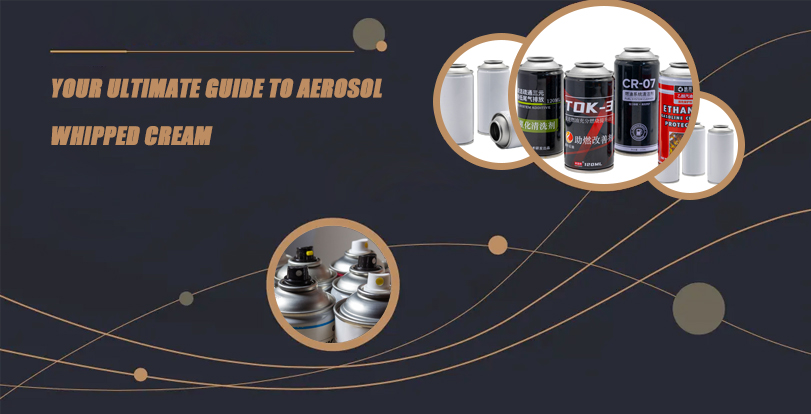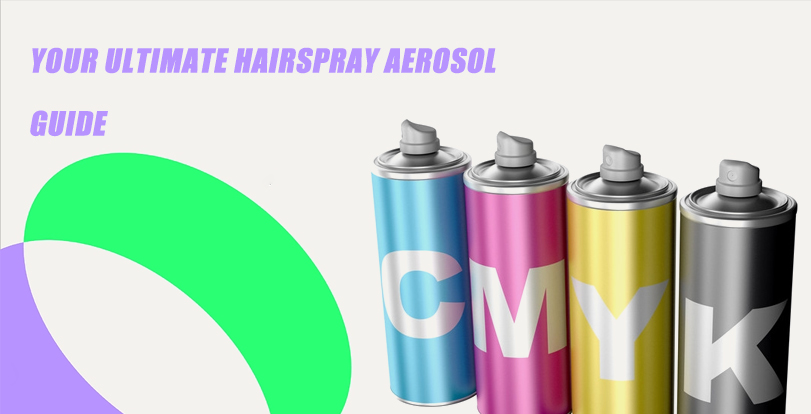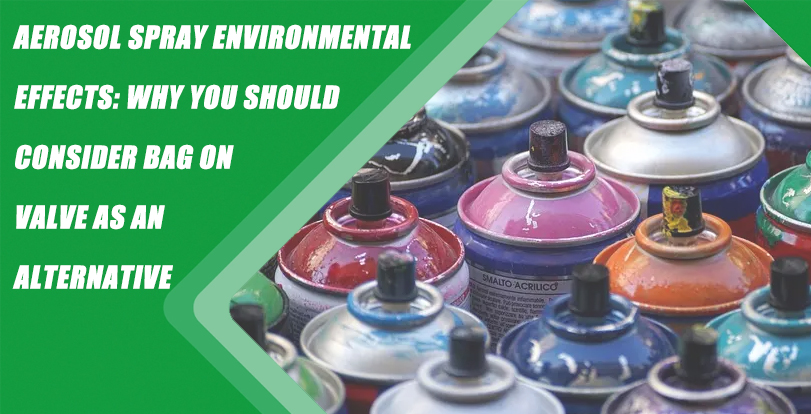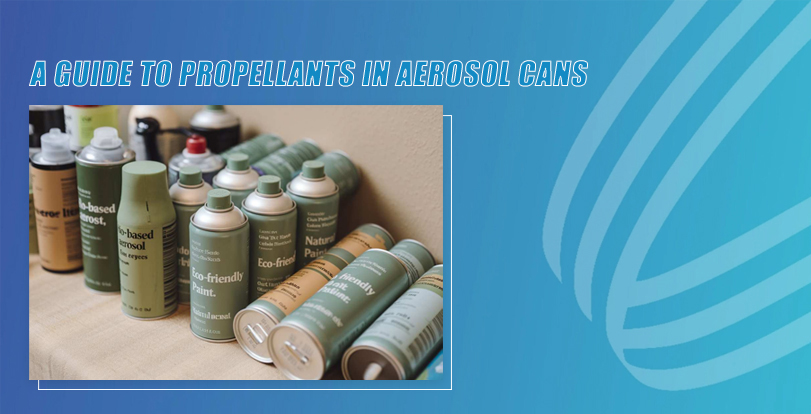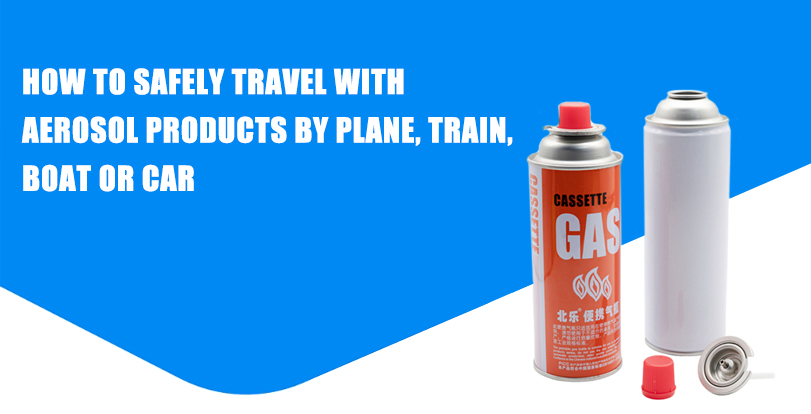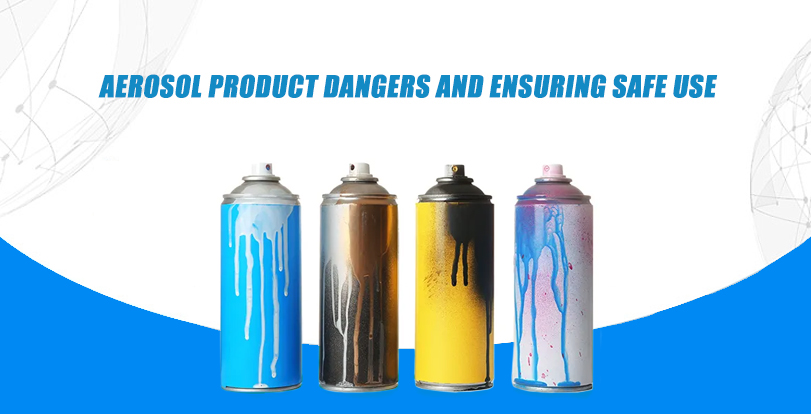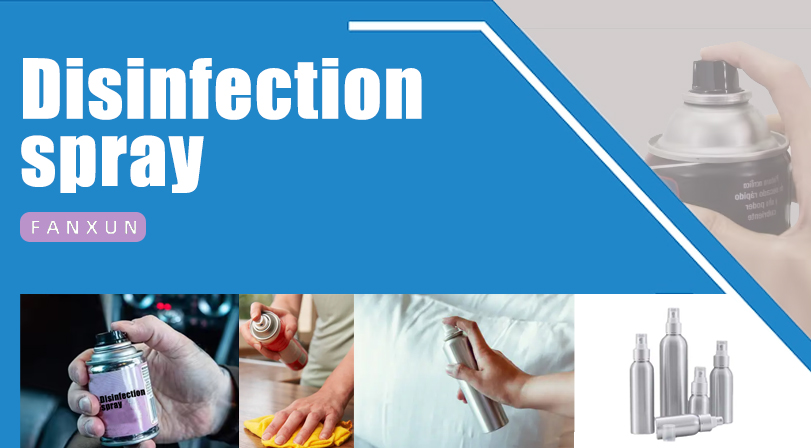Let’s talk hairspray. For many of us, it’s the unsung hero of our beauty routine. That final spritz that locks in a perfect style, tames stubborn flyaways, adds gravity-defying volume, or simply gives our hair that polished, finished look. Whether you’re crafting an intricate updo, defining curls, or just trying to keep your bangs in place on a windy day, chances are you’ve reached for an aerosol hairspray can.
But have you ever felt overwhelmed by the choices? Light hold, strong hold, mega hold? Volumizing, shine-enhancing, anti-humidity? And what exactly is in that can that performs such styling magic? Maybe you’ve experienced the dreaded “helmet hair,” flaky white residue, or a nozzle that mysteriously clogs right when you need it most.
If you’ve ever wished for a simple, clear guide to navigate the world of aerosol hairspray, você está no lugar certo. This is your comprehensive manual – designed from your perspective – to help you understand how it works, choose the perfect product for your needs, apply it like a pro, troubleshoot common issues, and even consider safety and environmental factors. Let’s demystify that can and empower you to achieve your best hair days, every day.
Behind the Mist – How Aerosol Hairspray Actually Works
It seems simple – press the button, and a fine mist emerges to hold your hair. But inside that sleek can, there’s a carefully balanced blend of ingredients and technology working together.
Inside the Can:
- The Styling Formula: This is the liquid gold that does the work. Key components include:
- Polymers: These are the star players – long-chain molecules (like PVP, acrylates copolymers, or various vinyl derivatives) that form a clear, flexible film on the hair strands when the solvent evaporates. This film physically holds the hairs together, providing the “hold.” Different polymers offer varying levels of stiffness and flexibility.
- Solvents: Primarily alcohol (like SD Alcohol 40-B or ethanol). Alcohol serves multiple purposes: it dissolves the polymers, helps the spray dry quickly upon contact with hair, and contributes to the fine mist formation. The quick evaporation is crucial for setting the style rapidly.
- Plasticizers: Ingredients like silicones, esters, or glycols are often added to make the polymer film more flexible and less brittle. This helps prevent that stiff, “crunchy” feeling and allows for more natural movement – preventing the dreaded “helmet hair.”
- Additives: Depending on the specific product claims, you might find conditioning agents (like panthenol or plant extracts), shine enhancers (often silicones), UV filters, anti-humidity agents, or fragrances.
- The Propellant: This is the gas that pushes the product out of the can and helps atomize it into a fine mist. Common propellants in hairspray include:
- Hydrocarbons: Butane, propane, and isobutane are frequently used. They provide good pressure and help create a fine spray pattern.
- Dimethyl Ether (DME): Another common propellant, known for its ability to dissolve polymers well and create a fine mist.
- These propellants are Volatile Organic Compounds (COV), which we’ll discuss more later in the environmental section. They are chosen for their pressure characteristics and ability to mix with the styling formula.
- A lata & Hardware:
- Canister: Usually aluminum or steel, designed to safely contain the pressurized contents.
- Valve System: Regulates the flow of product when the nozzle is pressed.
- Bocal (Actuator): The button you press. Its design is critical for creating the desired spray pattern (fine mist vs. stronger jet).
- Dip Tube: A plastic tube reaching down into the liquid formula, ensuring the liquid (not just the gas propellant) is drawn up and sprayed out.
The Spritzing Action:
- Shaking: Essential for mixing the formula ingredients and the propellant, which can sometimes separate slightly during storage.
- Pressing the Nozzle: This opens the valve. The high pressure inside the can, generated by the propellant, forces the mixture of styling formula and propellant up the dip tube and out through the nozzle.
- Atomization & Evaporation: As the mixture exits the nozzle into the lower atmospheric pressure, the propellant rapidly expands and vaporizes. This expansion breaks the liquid styling formula into tiny droplets – the fine mist you see. Simultaneously, the alcohol solvent begins to evaporate quickly upon hitting the air and your hair.
- Film Formation: As the solvent evaporates completely, the polymers are left behind on the hair strands. They link together, forming a network or film that holds the hair shafts in the desired style.
Your Perfect Styling Partner – Choosing the Right Hairspray
The hairspray aisle can be dizzying. Understanding the different types and features will help you find the one that best suits your hair and styling goals.
- Hold Level – The Most Crucial Choice:
- Light/Flexible Hold: Offers minimal control, mainly for taming minor flyaways and adding a touch of polish without stiffness. Good for fine hair or styles needing natural movement. Allows hair to be brushed easily.
- Medium Hold: Provides noticeable hold for everyday styles, keeping shape while still allowing some movement. A versatile option for most hair types and styles like loose waves or simple blowouts. Often brushable.
- Strong/Firm Hold: Offers significant control for styles that need to stay put, like defined curls, textured looks, or basic updos. Hair will feel firmer to the touch.
- Extra/Maximum/Freeze Hold: The powerhouse option for intricate updos, slicked-back styles, defying gravity, or ensuring your style lasts through anything (wind, humidity, dancing all night). Expect very firm hold with minimal movement.
- Beyond Hold – Finishes and Benefits:
- Shine vs. Matte: Choose based on the desired look – high gloss or a more natural, textured finish.
- Volumizing: Often contain lifting polymers or are formulated to be sprayed at the roots for extra body. Usually lighter weight to avoid weighing hair down.
- Anti-Humidity: Contain ingredients designed to block moisture absorption, helping prevent frizz in damp conditions. A lifesaver in humid climates!
- Texturizing: May contain ingredients like sea salt or other minerals to add grip and definition for beachy waves or piecey looks.
- Color-Protecting: Often include UV filters or antioxidants to help prevent hair color from fading due to sun exposure.
- Hair Type Considerations:
- Fine Hair: Look for lightweight or volumizing formulas with light to medium hold that won’t weigh hair down.
- Thick/Coarse Hair: Often requires medium to strong hold to maintain control.
- Curly Hair: Flexible hold sprays that combat frizz without making curls crunchy are often preferred. Look for moisturizing or anti-humidity benefits.
- Dry/Damaged Hair: Consider alcohol-free options (though less common in aerosols) or sprays with added conditioning ingredients. Limit use if alcohol is drying out your hair.
- Oily Hair: Avoid heavy, overly moisturizing formulas. A lighter hold might be sufficient.
- Ingredient Awareness:
- Alcohol: While necessary for quick drying, high amounts can be drying for some hair types with frequent use.
- Silicones: Provide shine and smoothness but can build up over time, requiring clarifying shampoos.
- Fragrance: Can be pleasant, but check if you have sensitivities. Fragrance-free options exist but are less common.
- Parabens/Sulfates: Some users prefer to avoid these; look for specific “free-from” labels if this is important to you.
- Travel Sizes: Perfect for your handbag, gym bag, or complying with airline liquid restrictions for carry-on luggage (usually 3.4oz/100ml or less).
Spray Like a Pro – Application Techniques for Best Results
How you apply hairspray matters almost as much as the product you choose. Follow these tips for a flawless finish:
- Style First, Spray Last: Complete your hairstyle (blow-drying, curling, straightening, putting it up) before applying hairspray. Hairspray is a finishing product meant to hold the style you’ve created.
- Shake, Shake, Shake: Always shake the can well before each use to ensure the ingredients and propellant are properly mixed.
- The Golden Rule – Distance: Hold the can about 8 para 12 polegadas (20 para 30 cm) away from your hair.
- Why? Spraying too close concentrates the product in one spot, leading to wetness, stiffness, flaking, and uneven hold. Proper distance ensures a fine, even mist covers a larger area.
- Keep it Moving: Use a continuous sweeping motion as you spray, rather than holding it steady on one section. This ensures even distribution and prevents buildup.
- Targeted Application:
- For Volume: Lift sections of hair at the crown and spray lightly underneath, near the roots. Let it dry for a second before dropping the section.
- For Flyaways: Spray lightly onto your fingertips or a clean toothbrush/spoolie and gently smooth down stray hairs. Avoid spraying directly onto the hairline if possible, to prevent buildup on skin.
- For Overall Hold: Lightly mist over your entire finished style in a sweeping motion.
- Layer Lightly: If you need more hold, it’s better to apply a second light coat after the first one has dried, rather than drenching your hair in one go.
- Avoid “Helmet Hair”: Use the minimum amount of product needed for your desired hold. Choose the right hold level for your style – don’t use freeze hold if you want movement! Ensure you’re spraying from the correct distance and keeping the can moving. Opt for “brushable” formulas if you like to restyle or touch up.
- Protect Your Face and Eyes: Shield your face with your hand or a towel, especially when spraying near the front hairline. Close your eyes during application.
Fixing Hairspray Fails – Troubleshooting Common Problems
Even seasoned hairspray users encounter issues sometimes. Here’s how to fix them:
- Problem: White Flakes or Powdery Residue
- Causes: Spraying too close, applying too much product, product buildup on the hair, incompatibility with other styling products used.
- Fixes: Try brushing the flakes out gently. If it persists, it’s likely buildup – use a clarifying shampoo to deep clean your hair. Prevent it by spraying from further away and using less product.
- Problem: Stiff, Crunchy Hair (“Helmet Hair”)
- Causes: Using a hold level that’s too strong for the desired look, spraying too close, applying too much product.
- Fixes: Try gently brushing through the hair (if the formula allows) to break up the stiffness. Use less product next time or switch to a lighter/more flexible hold formula. Ensure correct spraying distance.
- Problem: Clogged Nozzle (Spray is weak, sputtering, or blocked)
- Causes: Dried hairspray residue blocking the opening.
- Fixes: Remove the nozzle (if possible and safe – check instructions or manufacturer info) and soak it in warm/hot water. Alternatively, hold the can upside down and run hot water over the nozzle area for a minute. Wipe it clean. If completely blocked, very carefully try to clear the opening with a fine pin (ensure can is stable, point away from face, don’t force it).
- Prevention: Wipe the nozzle opening with a damp cloth after each use to prevent buildup.
- Problem: Uneven Spray Pattern or Sputtering
- Causes: Partially clogged nozzle, can not shaken well enough, propellant running low.
- Fixes: Clean the nozzle, shake the can vigorously, accept that the can might be nearing empty.
- Problem: Can Stops Spraying (Even if it feels like there’s product left)
- Causes: Loss of propellant (less common with modern hydrocarbon propellants unless the can/valve is damaged), completely clogged valve mechanism (harder to fix than just the nozzle).
- Fixes: Ensure nozzle is clean. If it still doesn’t work, the can might be defective or truly empty of propellant.
- Problem: Hair Feels Sticky or Tacky
- Causes: Over-application, high humidity reacting with the formula, using a particularly heavy or wet formula.
- Fixes: Use less product. Look for “fast-drying” ou “anti-humidity” formulas. Ensure hair is fully dry before applying.
Safety First – Handling Aerosol Hairspray Responsibly
Aerosol cans require careful handling due to their pressurized and often flammable contents.
- EXTREMELY FLAMMABLE: This is the most critical warning.
- Never spray near open flames, sparks, pilot lights, heaters, or lit cigarettes/cigars.
- Do not use while smoking.
- Allow hair to dry completely before using heat styling tools (curling irons, straighteners) after spraying, or before exposing hair to any potential ignition source.
- Use in Well-Ventilated Areas: Avoid using in small, enclosed spaces like bathrooms without ventilation. Open a window or use an extractor fan to minimize inhaling fumes. The propellants and solvents can displace oxygen and irritate the respiratory system.
- Avoid Intentional Inhalation: Deliberately inhaling the contents (“huffing”) is extremely dangerous and can cause serious health problems or be fatal.
- Eye Irritant: Avoid spraying directly into eyes. If contact occurs, immediately flush eyes thoroughly with water for several minutes. Remove contact lenses if present and easy to do. Continue rinsing. If irritation persists, seek medical 1 advice.
- Storage Safety:
- Store in a cool, dry place, away from direct sunlight and heat sources (radiators, stoves).
- Never store at temperatures above 120°F (50°C), as the can could burst. Avoid leaving it in a hot car.
- Keep out of reach of children and pets.
- Do Not Puncture or Incinerate: Even seemingly empty cans contain residual propellant and pressure. Never try to puncture them or dispose of them in fire or an incinerator.
Creative Hacks? Using Hairspray Beyond Hair (Use Cautiously!)
While designed for hair, hairspray has gained fame for a few off-label uses. Use these tips with extreme caution, test on inconspicuous areas first, and understand it’s not the intended purpose:
- Taming Eyebrows: Spray a tiny amount onto a clean spoolie or eyebrow brush (NEVER directly onto your face/brows), then brush brows into place.
- Static Cling: A very light, quick mist sprayed inside clothes (from a distance) can sometimes help temporarily reduce static. Be wary of fabric types and potential staining or stiffness.
- Stopping Runs in Tights: An old trick – spraying a small amount on a snag might help prevent it from running further. Modern tights may react differently.
Disclaimer: Hairspray is formulated and tested for hair. Using it for other purposes carries risks (staining, skin irritation, ineffective results) and is done at your own discretion.
Hairspray and the Planet – Impacto Ambiental & Alternatives
Using aerosols does have environmental considerations:
- COV (Volatile Organic Compounds): The propellants (hydrocarbons, DME) and alcohol solvents are VOCs. When released, they can contribute to the formation of ground-level ozone (smog), which impacts air quality and respiratory health. Many regions have regulations limiting VOC content in consumer products, and manufacturers are continually working on lower-VOC formulas.
- Can Recycling: The good news is that steel and aluminum aerosol cans are highly recyclable!
- Crucial Step: Empty the Can: Ensure the can is completely empty before recycling. Use it until no more product or propellant comes out when pressed. Do NOT puncture, crush, or flatten the can.
- Check Local Rules: Recycling guidelines for aerosol cans vary by location. Check your local municipality’s waste management website. They will specify if aerosols go in curbside bins (usually with metals/plastics) or need special handling/drop-off.
- Caps/Nozzles: Plastic caps and nozzles might need to be removed and recycled separately (or discarded if not recyclable locally).
- Alternatives to Aerosol Hairspray:
- Non-Aerosol Hairsprays (Pump Sprays): Delivered via a manual pump mechanism.
- Pros: No hydrocarbon/DME propellants (lower VOCs from propellant), often allow more targeted application, can sometimes be refillable.
- Cons: Application is often wetter, may take longer to dry, spray pattern might be less fine, still contain polymers and solvents (often alcohol).
- Styling Mousses, Gels, Waxes, Pomades, Creams: Offer various levels of hold, texture, and finish through different application methods (applied to damp or dry hair with hands). Completely different format and feel.
- Finishing Sprays (Pump): Similar to non-aerosol hairsprays, often focused on shine or light hold.
- Non-Aerosol Hairsprays (Pump Sprays): Delivered via a manual pump mechanism.
Choosing the “best” option involves balancing performance needs, application preference, and environmental concerns. Responsible disposal of aerosol cans is key.
Perguntas frequentes – Your Hairspray Questions Answered
Let’s clear up some common queries:
- What’s the real difference between hold levels? It comes down to the concentration and type of polymers used, determining how rigidly they hold hair fibers together.
- Can I use hairspray every day? Is it bad for my hair? You can, but be mindful of potential drying from alcohol (especially for dry/damaged hair) and product buildup. Regular clarifying washes are important. Listen to your hair’s needs.
- How do I get rid of hairspray buildup? Use a clarifying shampoo once a week or as needed. These are designed to deep clean and remove residue from products, minerals, etc..
- Why does my hairspray sometimes leave white flakes? Usually spraying too close, using too much, or buildup. Ensure proper distance and use a clarifying shampoo regularly.
- Can I bring aerosol hairspray on an airplane? Check current TSA (or relevant authority) and airline regulations. Geralmente:
- Checked Luggage: Larger sizes are usually allowed, subject to overall quantity limits for aerosols.
- Carry-On Luggage: Only travel sizes (typically 3.4 onças / 100 ml or less) are allowed, and they must fit within your single quart-sized bag for liquids, aerosols, and gels (LAGs).
- Is aerosol or non-aerosol (pump) hairspray better? Neither is inherently “better”; it depends on preference. Aerosols offer a finer mist and faster drying. Pumps avoid aerosol propellants but have a wetter application.
- How do I know when the aerosol can is truly empty? It will feel very light, make little sound when shaken, and stop spraying product/propellant when the nozzle is pressed.
- Will hairspray really protect my hair from humidity? Only if it’s specifically formulated as an “anti-humidity” spray. Regular hairspray might offer minimal resistance but isn’t designed for heavy moisture blocking.
- Does hairspray expire? Sim. Look for an expiration date or a Period After Opening (PAO) symbol (like “12M” in an open jar icon). Over time, ingredients can degrade, affecting performance and potentially changing the smell or texture.
- Can I spray hairspray on wet hair? Generally no. Most hairsprays are designed as finishing products for dry, styled hair. Applying to wet hair can make it stiff, sticky, and interfere with drying/styling. Mousses or gels are better for wet application.
Quick Checklist – Considerations Before You Choose & Use
Before buying or spraying, run through this mental checklist:
- My Hair Type: Fine, thick, curly, dry, oily, color-treated?
- My Desired Style: Natural movement, everyday hold, intricate updo, volume, frizz control?
- Hold Level Needed: Light, medium, strong, maximum?
- Finish Preference: Shine or matte?
- Sensitivities: Fragrance, alcohol, other ingredients?
- Environmental Concerns: COV, recycling commitment?
- Application Method Preference: Fine aerosol mist or wetter pump spray?
- Usage Situation: Everyday, special occasion, travel?
Conclusão: Confidence in Every Spritz
Aerosol hairspray, when chosen wisely and used correctly, is an incredibly effective tool in your styling arsenal. It offers unparalleled convenience for achieving long-lasting hold, volume, and polish. By understanding the types, mastering the application techniques (remember that 8-12 inch distance!), knowing how to troubleshoot minor issues, and handling the can safely, you can confidently use hairspray to perfect your look. Don’t forget the importance of responsible disposal through recycling once the can is completely empty.
The journey of your hairspray from concept to your hands relies on precise manufacturing and dependable packaging. The aerosol can itself is a key component, requiring quality production to ensure safety and performance. Companies like FANXUN, known as a world-class manufacturer and supplier, play a vital role in this process. They provide high-quality aerosol cans suitable for various industries, including cosmetics like hairspray, offering products in different specifications and shapes to meet diverse product needs. This behind-the-scenes manufacturing ensures that the products we rely on for our styling routines are delivered effectively and safely.
Então, embrace the power of hairspray! Armed with this knowledge, you’re ready to choose your perfect match, spray with confidence, and keep every strand perfectly in place.















